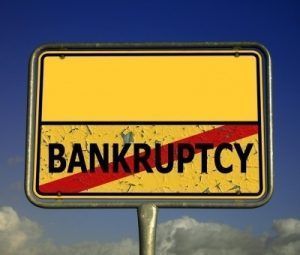The Differences Between Personal and Corporate Bankruptcy
 Nobody is immune to financial difficulty. Whether you’re a recent college grad or a highly-esteemed professional, the owner of a neighborhood grocery or a nationally-recognized retailer, debt can become so overwhelming that you need to act. Filing for bankruptcy
can provide the answer, but there are a number of differences between the way that personal and corporate bankruptcies are handled. These differences involve the rules to which the bankruptcy filer must adhere, as well as the chapters in the U.S. bankruptcy code that are to be used.
Nobody is immune to financial difficulty. Whether you’re a recent college grad or a highly-esteemed professional, the owner of a neighborhood grocery or a nationally-recognized retailer, debt can become so overwhelming that you need to act. Filing for bankruptcy
can provide the answer, but there are a number of differences between the way that personal and corporate bankruptcies are handled. These differences involve the rules to which the bankruptcy filer must adhere, as well as the chapters in the U.S. bankruptcy code that are to be used.
When an individual applies for personal bankruptcy, they’re required to submit to a means test to prove that they can’t pay their debts. By contrast, businesses have no such requirement. Another major difference between personal and business bankruptcies is the ability to cancel contracts. If a business and their creditor agree that it is in everybody’s best interest to step away from a debt, they’re free to do so: individuals who owe money for student loans, child support and other specific types of debt to not have that option.
Chapter 7 is available to individuals who have no hope of repaying their debts. In discharging the monies that the person owes, this type of bankruptcy liquidates many of the debtor’s remaining assets to pay off as much of their debt as possible. Though it wipes most debt away, it does not eliminate contracted debts such as child support, tax-related debt or student loan debt. Businesses can also file for bankruptcy under Chapter 7, but in doing so they sacrifice the entire entity.
Chapter 13 is the other form of bankruptcy commonly used by individuals. It provides debtors with a way of restructuring or reorganizing their debt: in some cases, the amount of debt or payment terms are renegotiated to allow for smaller payments to be made over longer periods of time. Chapter 13 is most frequently used by people who have income but for whom that income is not enough to meet their debts under their existing terms.
Chapter 11 bankruptcy is for businesses, though individuals can use it too. It’s similar to Chapter 13 bankruptcy in that it represents reorganization rather than elimination of debt. When a business files for Chapter 11 bankruptcy, they submit a proposal for how they’d like to pay off their debt and what the revised terms should be. Those to whom they owe money are also invited to submit their own proposal for the debt, and then a vote is taken among all of the creditors to determine how to move forward.
Whether you’re an individual or a business and whether your situation seems hopeless or you just need a little help, filing for bankruptcy can give you a path to a fresh start. Contact us today to learn more about your options.
The post The Differences Between Personal and Corporate Bankruptcy appeared first on Jensen Bagnato, P.C. | Attorneys At Law.
Unlock your legal success with a free consultation!
Call us now at (215) 546-4700 or click the link to request a Zoom meeting. Your future starts with the right advice today!

Law Office of Jensen Bagnato, P.C.
1500 Walnut St, Suite 1510, Philadelphia, PA 19102
Overview
Practice Areas
All Rights Reserved | Jensen Bagnato, P.C. | Disclaimer | Privacy Policy
